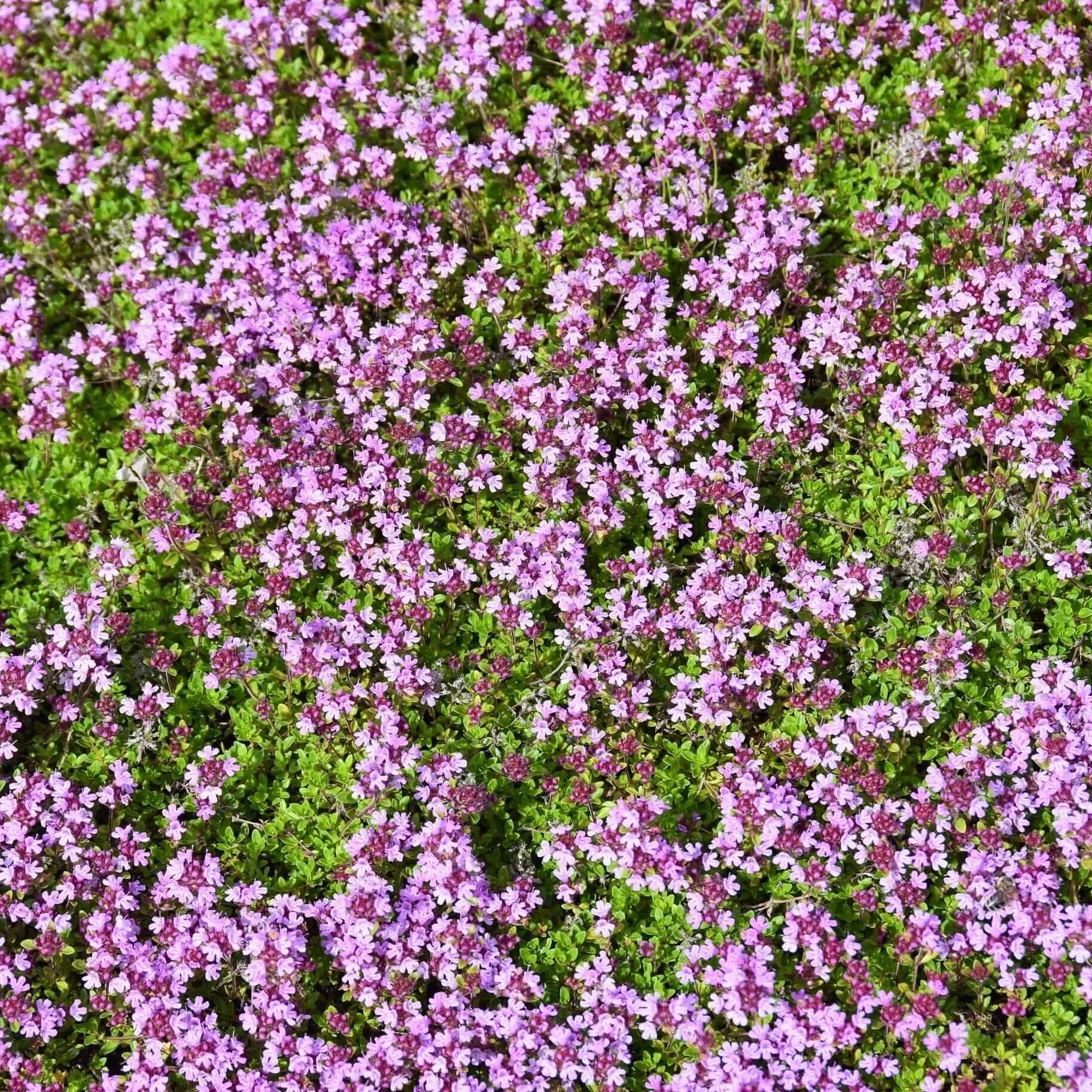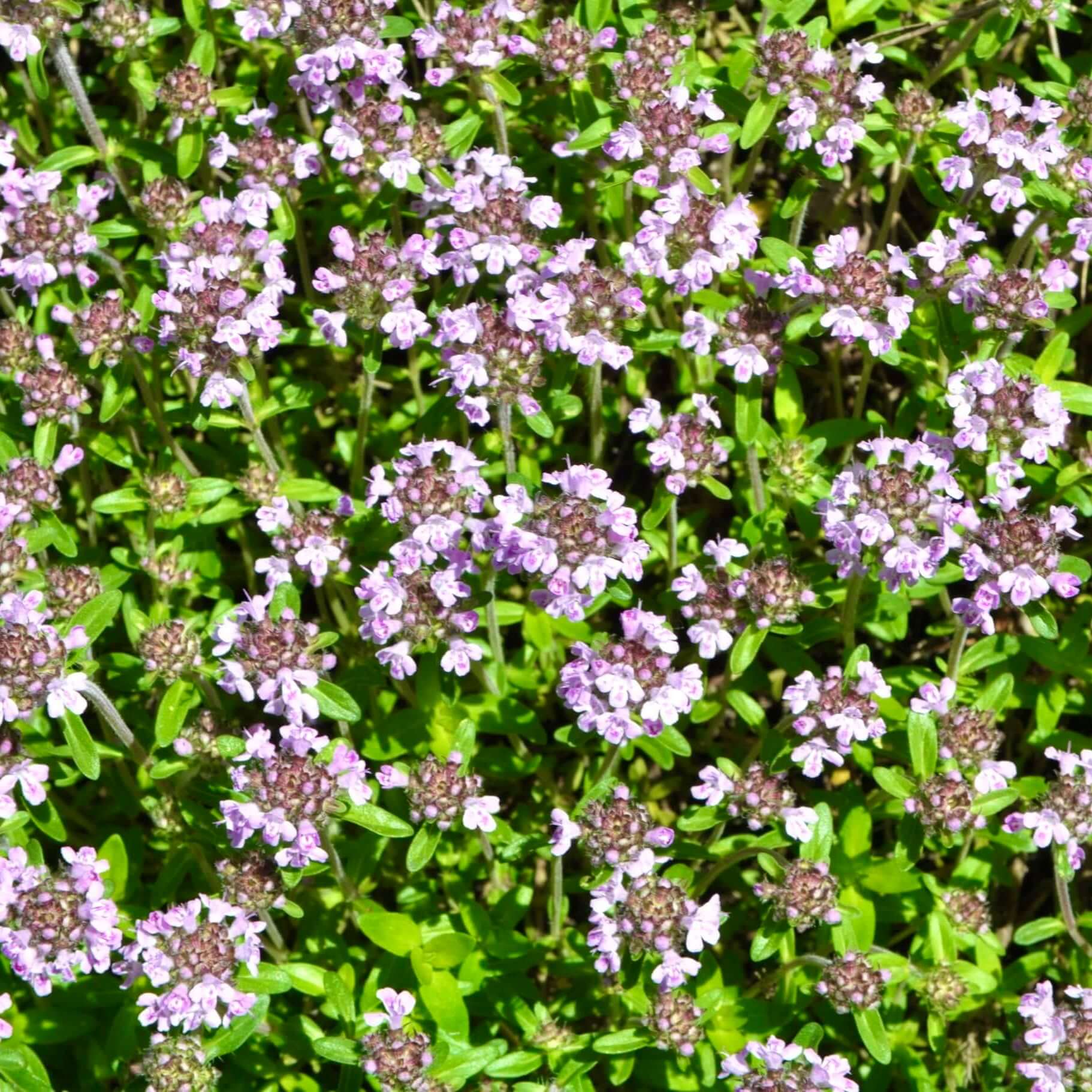
Creeping Thyme
Thymus serpyllum 'Creeping Thyme' (T. praecox arcticus)(T. drucei)
Delivery
24-hour money-back guarantee
Free delivery on orders over $349
Big Project? Call 888-444-1126 for bulk rates!
Thymus serpyllum, also known as Creeping Thyme is the ultimate garden must-have for any homeowner looking to elevate their outdoor space! This hardy and versatile plant is perfect for adding a touch of whimsical charm and beauty to your garden.
Creeping Thyme is an evergreen perennial herb that boasts stunning clusters of tiny pink, purple, or white flowers that bloom throughout the summer months. Its lush green foliage forms a dense mat that spreads effortlessly across the ground, making it an ideal option for filling in gaps between stepping stones, softening borders, or cascading over walls and containers. We also carry Pink Creeping Thyme.
Not only does Creeping Thyme add a pop of color and texture to your landscape design, but it also attracts pollinators like bees and butterflies with its sweet fragrance. Plus, this low-maintenance plant requires minimal care once established - simply plant it in well-drained soil in full sun to partial shade and watch it thrive!
Whether you're a seasoned gardener or just starting out on your green thumb journey, Creeping Thyme is sure to impress with its easy-going nature and eye-catching appeal. Use it as ground cover in rock gardens or mixed borders, line walkways with its vibrant blooms, or create stunning floral arrangements indoors.
Don't miss out on the opportunity to enhance your home garden with this exquisite herbaceous gem. Creeping Thyme will be the envy of all your neighbors! Add some Creeping Thyme to your garden today and enjoy years of beauty and tranquility right outside your doorstep.
How tall and wide does Creeping Thyme grow?
When does Creeping Thyme bloom?
What kind of sunlight and soil does it prefer?
How much water does it need?
12 in. or less
12-18 in.
Moderate
Pollinators, Bees, Butterflies
Perfect Your Landscape With Expert Help
Customize your yard with confidence. Schedule your free consultation today and bring your outdoor space to life!

